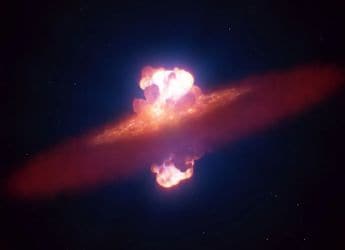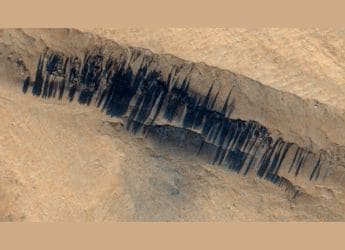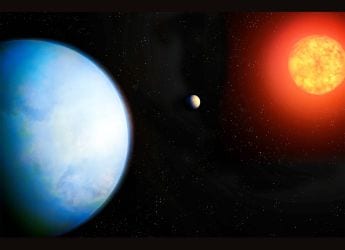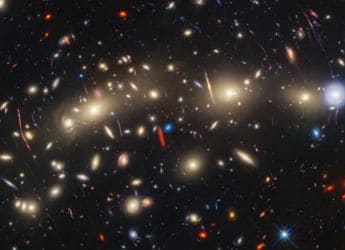- Home
- Science
- Science News
- Intense Solar Storm With Huge CMEs Forced Astronauts to Take Shelter on the ISS
Intense Solar Storm With Huge CMEs Forced Astronauts to Take Shelter on the ISS
A powerful November 2025 solar storm generated stunning auroras but also heightened radiation in orbit.

Photo Credit: NASA/Jonny Kim
Severe solar storm triggered auroras, high radiation, sending ISS crew into shelter
Powerful solar storms illuminated the sky on Earth in mid-November 2025 with bright auroras. At the same time, astronauts in the International Space Station took additional safety measures against the radiation burst. Russian cosmonauts, such as those, were requested to dedicate one night in a shielded lab module, which was more heavily shielded, whereas others were in their usual quarters. Flight controllers also worked on which modules to avoid giving instructions. This act highlights the unseen threat of spectacular space weather.
Dazzling Auroras and Radiation Risk
According to NASA, for people on Earth, even intense solar storms are mostly safe. NASA notes that Earth's magnetic field and atmosphere block most dangerous radiation, echoing the EPA's remark that our atmosphere “works like a shield” against solar particles. But the picture changes above the atmosphere.
In November 2025, a storm from sunspot AR4274 unleashed huge coronal mass ejections (CMEs) that triggered bright auroras across the Northern Hemisphere. Space.com reported that those CMEs carried “heavy, radioactive ions” that can harm astronauts in orbit.
Astronauts Take Shelter on ISS
For example, even flight controllers told three Russian cosmonauts to spend the night in the station's Destiny laboratory, while the U.S. and Japanese crew remained in their usual quarters. NASA reported that the U.S. segment “slept in their crew quarters” while the Roscosmos cosmonauts “camped out in the lab”.
Destiny's thick walls provide extra shielding: Aviation Week notes it “provides better protection” against high radiation. The crew was also advised which other station modules to avoid during the storm. For ISS crews, such precautions remain routine to limit exposure.
Get your daily dose of tech news, reviews, and insights, in under 80 characters on Gadgets 360 Turbo. Connect with fellow tech lovers on our Forum. Follow us on X, Facebook, WhatsApp, Threads and Google News for instant updates. Catch all the action on our YouTube channel.
Related Stories
- Samsung Galaxy Unpacked 2025
- ChatGPT
- Redmi Note 14 Pro+
- iPhone 16
- Apple Vision Pro
- Oneplus 12
- OnePlus Nord CE 3 Lite 5G
- iPhone 13
- Xiaomi 14 Pro
- Oppo Find N3
- Tecno Spark Go (2023)
- Realme V30
- Best Phones Under 25000
- Samsung Galaxy S24 Series
- Cryptocurrency
- iQoo 12
- Samsung Galaxy S24 Ultra
- Giottus
- Samsung Galaxy Z Flip 5
- Apple 'Scary Fast'
- Housefull 5
- GoPro Hero 12 Black Review
- Invincible Season 2
- JioGlass
- HD Ready TV
- Laptop Under 50000
- Smartwatch Under 10000
- Latest Mobile Phones
- Compare Phones
- Vivo Y500 Pro
- Realme GT 8 Pro Aston Martin F1 Limited Edition
- Huawei Mate 70 Air
- Moto G57
- Moto G57 Power
- Motorola Edge 70
- Moto G Play (2026)
- Moto G (2026)
- MacBook Pro 14-inch (M5, 2025)
- Asus Vivobook S16 (S3607QA)
- iQOO Pad 5e
- OPPO Pad 5
- Noise Diva 2
- Noise Halo 2
- Acerpure Nitro Z Series 100-inch QLED TV
- Samsung 43 Inch LED Ultra HD (4K) Smart TV (UA43UE81AFULXL)
- Asus ROG Ally
- Nintendo Switch Lite
- Haier 1.6 Ton 5 Star Inverter Split AC (HSU19G-MZAID5BN-INV)
- Haier 1.6 Ton 5 Star Inverter Split AC (HSU19G-MZAIM5BN-INV)

















